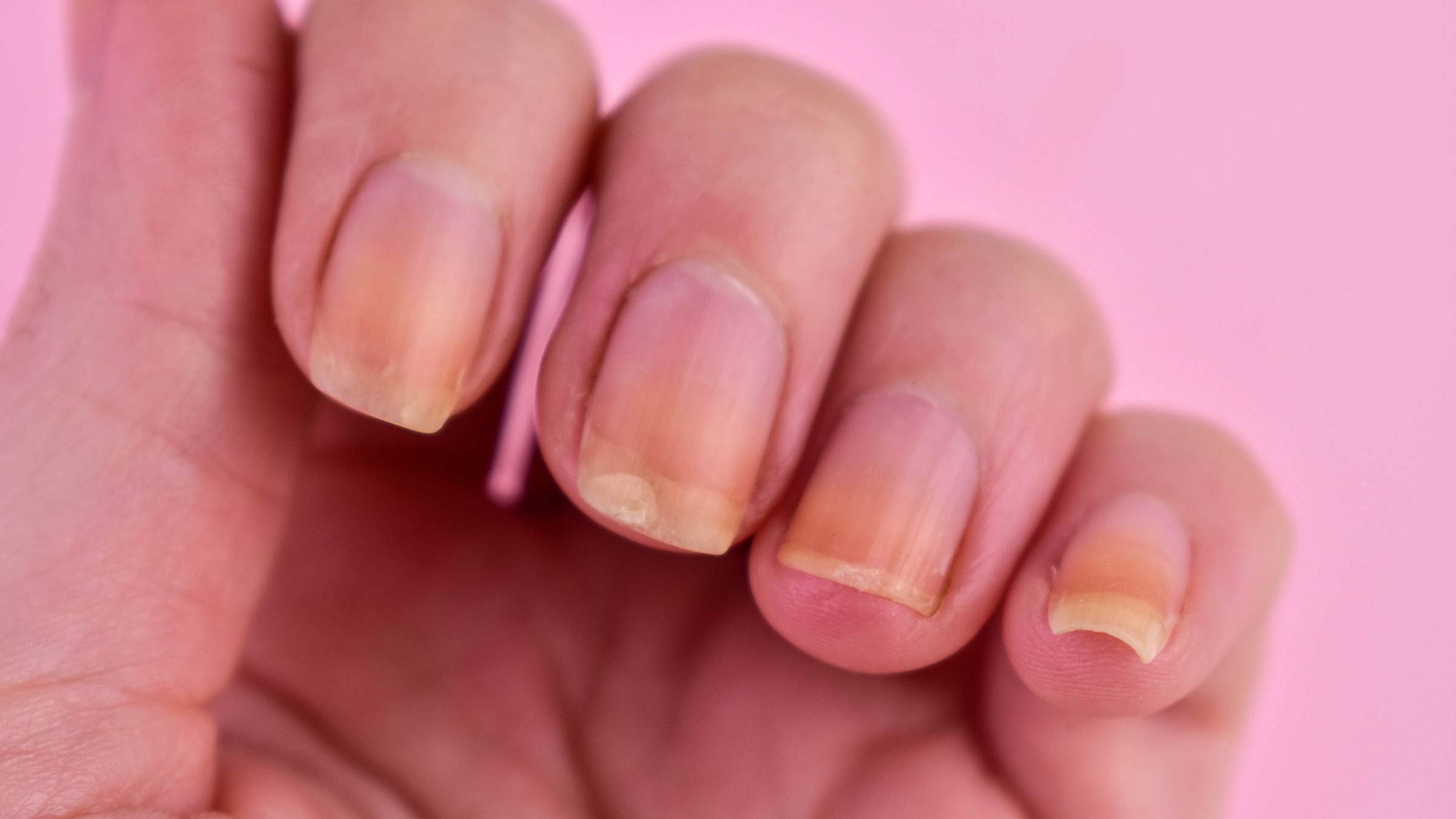
Your nails can tell you a lot about your overall health.
Discoloration, weakness and lifted nails all point to various illnesses that may be a result of the change in both your fingernails and toenails.
But is all yellowing necessarily a medical condition that requires you to consult your physician? No.
So, what causes your nails to change shape and color?
Nail polish
Certain color shades and frequent use of nail polish and acetone nail polish removers can cause a white-yellow staining of the nail plate. This is purely cosmetic, very common and not harmful.
Treatment
There is no treatment because the staining will grow out as the nails grow with time. To speed up the process, give your nails a break from use of polish, avoid acetone nail polish removers and soak your nails in diluted vinegar (1 part vinegar, 4 parts water) to help reduce the yellowing.
Prevention
Darker shades are more likely to leave the staining, so go with a lighter shade and consider a protective base coat first.
Fungal infections/onychomycosis
Yellowing of the nail can indicate a fungal infection of the nail, more commonly seen in toenails than fingernails. The discoloration becomes worse with tight-fitting shoes or trauma to the nail plates and can be associated with athlete’s foot, as well. The most common fungal infection is from the Trichophyton family. Infection with fungus can cause thickening and deformity of the nail plate, which leads to the discoloration of the nail.
Treatment
- Avoid moist environments and wear comfortable, properly fitted shoes.
- Treat any underlying fungal infection with an antifungal medication. Antifungals come in both topical and oral form, with the oral being more effective than topical alone.
- Because nails grow slowly, a systemic medication would need to be prescribed for at least three months in order to fully eradicate. However, cure rates with current antifungals are generally 50-60%, so you might need to repeat the course and still not have the infection fully treated.
Prevention
Your dermatologist can culture your nails to determine the exact type of fungus and tailor the treatment according to what would work best in fighting the underlying fungus.
Onycholysis
Onycholysis occurs when the tip of the nail plate away from the cuticle begins to lift off the nail bed and looks white or yellow because the nail bed is now exposed to air.
This detachment means that the nail plate is no longer sticking to the nail bed.
Common causes include trauma or psoriasis, and can also be a side effect of certain medications.
Onycholysis is commonly seen in certain occupations in which people work with their hands (butchers, food handlers and hairdressers are common examples).
Treatment
Avoid trauma to your nails, wear protective gloves and avoid wet/moist environments and harsh chemicals to hands.
Also, keep your nails trimmed neatly and avoid cleaning under the nails, as this can worsen the onycholysis and cause it to track further back on the nail bed.
Prevention
If you’re taking medication that may cause or worsen the symptoms, consider discontinuing if the onycholysis becomes bothersome or painful.
Psoriasis
In addition to onycholysis, nail changes with psoriasis can include yellowing of the nails, thickening of the nails and pitting of the nails.
Treatment
Psoriatic nails are best treated with systemic medications for psoriasis. Nail psoriasis is a condition where a dermatologist can help tailor treatment depending on how many nails are involved and if you have skin/joint involvement. A dermatologist can prescribe the most effective and appropriate treatment option. If psoriasis is limited to nails only, you can have steroid injections to the nails (intralesional steroid injections directly into the nail cuticle). However, if there’s diffuse skin involvement and/or psoriatic arthritis along with the nail changes, a systemic medication is needed. Some of the newer biologic agents, such as ixekizumab, can be helpful with widespread skin and nail involvement. This is where your dermatologist can target therapies depending on severity of the condition.
Yellow nail syndrome
Yellow nail syndrome is a rare, systemic disease characterized by yellow toenails and fingernails, along with systemic symptoms, including respiratory breathing problems and lymphedema swelling of the legs.
Treatment
Treatment is mainly focused on addressing systemic symptoms for the respiratory symptoms and peripheral edema. There is currently no effective treatment for the nails.
Self-tanners
Applying a self-tanner can lead to staining of the fingernails.
Treatment
Wear gloves when applying the self-tanner and be sure to wash your hands after application.
Thyroid diseases
Nail changes can occur with both hypo- and hyper-thyroidism. Onycholysis can be seen in hyperthyroidism, in addition to yellowing of the nail plates, while the most common nail changes with hypothyroidism include thickening and crumbling of the nail plates, brittleness and slow growth.
Treatment
Treating the underlying thyroid disease, such as thyroid hormone replacement if hypothyroid.
Diabetes
Diabetics often struggle with dry skin, particularly on the arms and legs. Nails can act similarly where nails can become thickened, discolored, brittle and crumble easily. These nails are susceptible to fungal infections (onychomycosis), which leads to further thickening and yellowing of the nails.
Treatment
Maintaining better glucose/sugar control is important to reduce the chance of diabetes flares. Consider treating underlying fungal infection and take care of your nails in conjunction with podiatry.
Liver diseases
You can see yellowing of skin and nails with underlying liver disease and jaundice with treatment aimed at treating underlying liver disease.
There are a number of causes that can lead to yellowing of the nails. See a dermatologist to help determine the cause and treatment.

Worried about your skin?
Ohio State's dermatology team provides comprehensive care backed by one of the nation's leading academic health centers.
Expert care starts here




